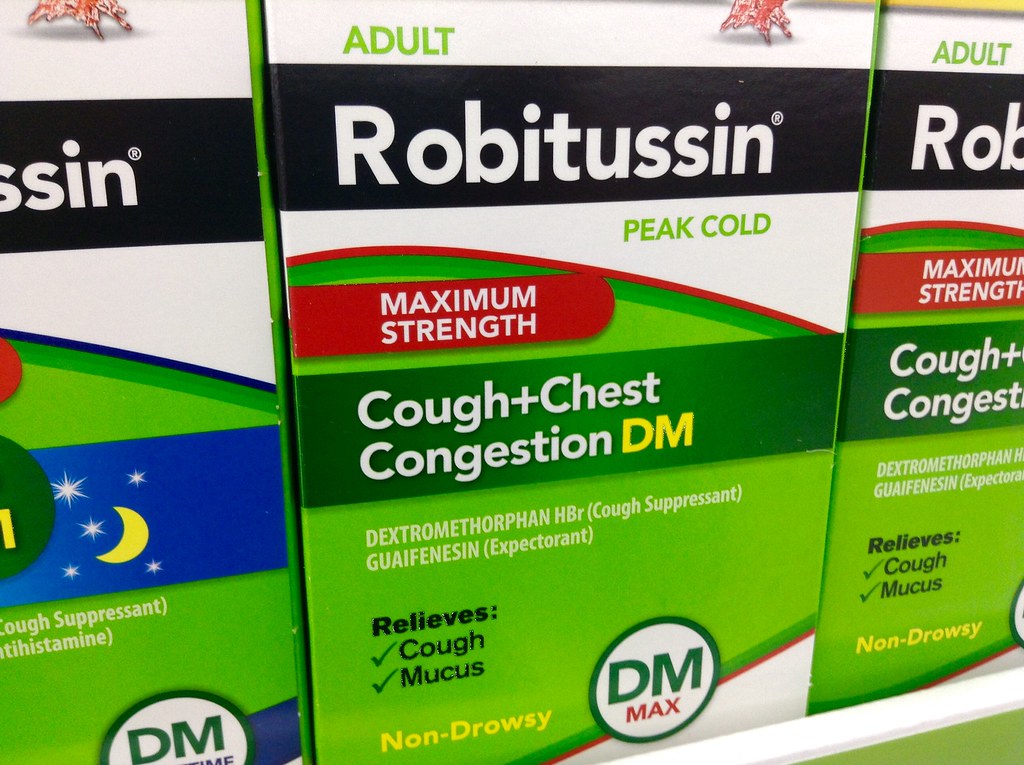Difference Between Antitussive and Expectorant
An antitussive is a medication which helps you to reduce coughing. An expectorant is medication which helps you to expel mucus.

What is Antitussive?
Definition:
An antitussive greatly decreases coughing by working on the cough reflex in the brain. Antitussive medications help a person to cough less often and with less intensity.
Ingredients:
The primary ingredient of an antitussive is dextromethorphan, which is a synthetic chemical related to codeine. Codeine also has some ability to also reduce coughing and helps with pain but is very addictive. Dextromethorphan is also derived from an opioid substance, but is not as addictive as other medications such as codeine, which is a big advantage in helping people avoid tolerance and dependence. A drug that also acts as an antitussive but that acts differently on the cough reflex is levodropropizine.
Activity:
Levodropropizine works on the sensory fibers rather than centrally on the actual medulla region of the brain stem. Dextromethorphan has a direct effect on the cough reflex, and is also called a centrally-acting drug, which directly affects the cell receptors in the medulla; it acts as an antagonist on these receptors to which it binds. The binding action of the drug interferes with the cell signaling mechanisms involved in the cough reflex.
Uses:
An antitussive is used for certain types of coughs in which there is not an overproduction of mucus. They often are good medications where coughing is because of an allergic reaction or due to a sinus problem or rhinovirus infection.

What is Expectorant?
Definition:
Expectorants are medicines that act on the mucus so that it is easier to cough up. This should not be confused with an antitussive, which is also used for coughs, but instead is used to suppress a cough.
Ingredients:
Guaifenesin is the main ingredient of expectorant cough medicine. The substances salbutamol and bromhexine are sometimes also used along with the guaifenesin. Guaifenesin was originally called glycerol guaiacolate and it was obtained from the resin of a guaiacum tree.
Activity:
Guaifenesin functions to decrease the viscosity of the mucus which means it is more like water and thus easier to cough up, which alleviates the chest and airway congestion associated with many respiratory infections. Salbutamol works on adrenergic receptors of the airway cells to help relax the muscles and make breathing easier where there is much chest congestion, thus it is often used along with the guaifenesin in expectorant medicine. Bromhexine is a mucolytic which works in synergy with the guaifenesin to help clear the respiratory passages of excessive mucus.
Uses:
An expectorant cough medicine is helpful for people who have illness in which too much mucus is produced. Such illnesses include bronchitis, cystic fibrosis and bronchiectasis, in which there is a great deal of chest congestion. The expectorant makes it easy to cough up and expel the mucus since it really thins the mucus out. While expectorants are used for infectious coughs and antitussives more for allergies, there are some cough formulations that combine both guaifenesin and dextromethorphan. The best advice is to see a doctor to find out which medication will work best for your situation.
Difference between Antitussive and Expectorant?
Definition
An antitussive is a chemical substance that specifically acts to reduce the coughing reflex of the brain so you cough less. An expectorant functions to reduce the viscosity of mucus so it is easier to expel.
Ingredients
The ingredients in an antitussive include dextromethorphan, levodropropizine, and codeine. The ingredients in an expectorant include guaifenesin, bromhexine, and salbutamol.
Impact on the medulla of the brain
An antitussive directly influences the cough reflex center in the medulla oblongata by binding to cell receptors. An expectorant affects the viscosity of the mucus and does not directly impact the medulla of the brain.
Direct impact on the mucus
An antitussive does not directly impact mucus but rather it affects the coughing reflex of the brain. An expectorant directly impacts mucus because it functions to make mucus much thinner and easier to cough up.
Uses
Medicine that is antitussive is used to treat coughs due to irritation such as in allergies, including hayfever or sinusitis. Medicine that is an expectorant is used to treat coughs due to infections like bronchitis and bronchiectasis.
Table comparing Antitussive and Expectorant

Summary of Antitussive Vs. Expectorant
- An antitussive reduces the tendency to cough by its influence on the cough reflex center in the brain.
- An expectorant helps to get rid of excess mucus in the airways by helping decrease the viscosity of such secretions.
- Both antitussives and expectorants are related because they are common ingredients in various cough medications.
- There are some medications which contain both an expectorant and an antitussive.
- A doctor will advise you on the best type of cough medicine to take for your situation if you have a cough.
- Difference Between Rumination and Regurgitation - June 13, 2024
- Difference Between Pyelectasis and Hydronephrosis - June 4, 2024
- Difference Between Cellulitis and Erysipelas - June 1, 2024
Search DifferenceBetween.net :
References :
[0]Bolser, Donald C. "Cough suppressant and pharmacologic protussive therapy: ACCP evidence-based clinical practice guidelines." Chest 129.1 (2006): 238S-249S.
[1]Prabhu, S. Shankar, et al. "Efficacy, safety and tolerability of salbutamol+ guaiphenesin+ bromhexine (Ascoril) expectorant versus expectorants containing salbutamol and either guaiphenesin or bromhexine in productive cough: a randomised controlled comparative study." Journal of the Indian Medical Association 108.5 (2010): 313-4.
[2]Taylor, James A., et al. "Efficacy of cough suppressants in children." The Journal of pediatrics 122.5 (1993): 799-802.
[3]Image credit: https://static.openfoodfacts.org/images/products/768/063/276/0010/front_fr.3.full.jpg
[4]Image credit: https://live.staticflickr.com/8608/16220058261_2d2a124ce9_b.jpg
